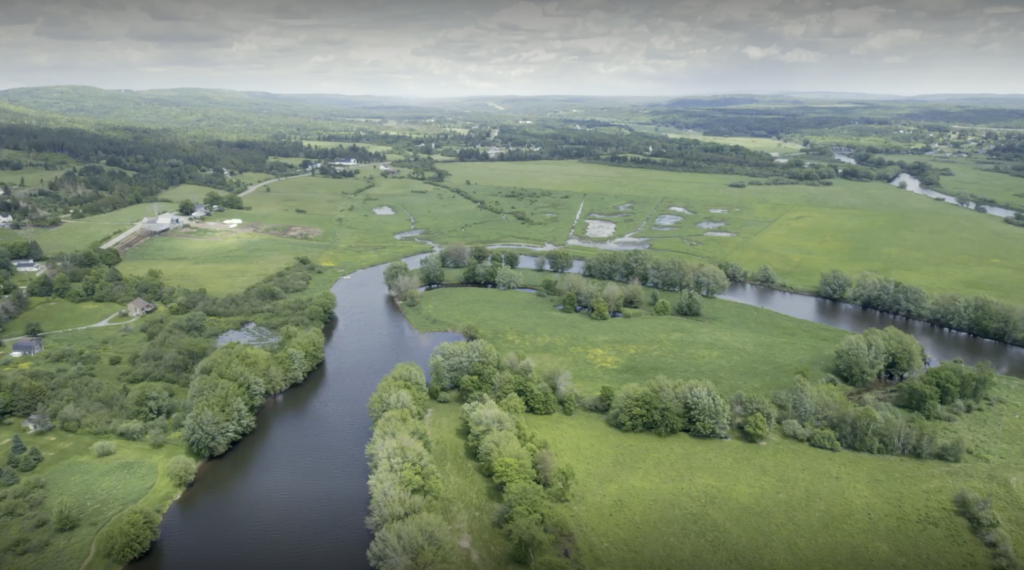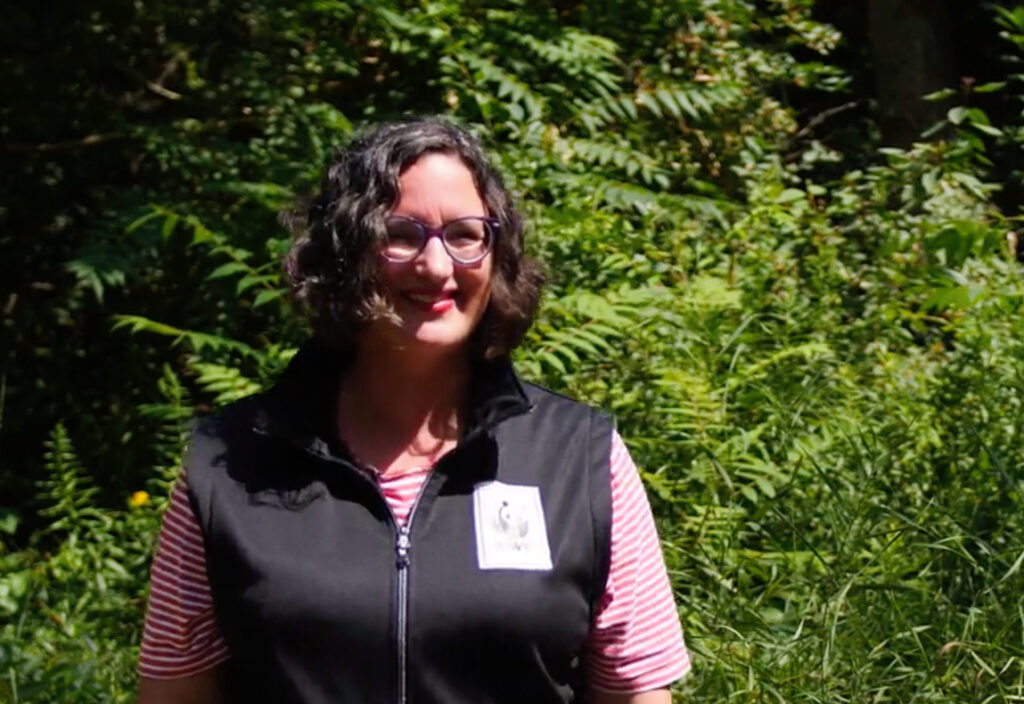How restoring rivers helps fight climate change
If you want to see the restorative power of nature, look no further than the banks of the Kennebecasis River. The waterway and its tributaries — which wind through southeast New Brunswick’s agricultural heartland — once ran clear and cool enough to suit schools of sturgeon, salmon, and trout.
Then things changed.

A mix of human activity, global warming and climate-fuelled extreme weather thinned out the native trees and shrubs on river’s edges, pushed more sediment into the streams, and raised overall water temperatures. Not good for at-risk fish. Not good for nearby plants and animals. Not good for locals who don’t want to wake up to flooded communities.
Enter the Kennebecasis Watershed Restoration Committee. The community organization is leading a project called the Carbon Capture Collective, with help from the Hammond River Angling Association (HRAA) and Belleisle Watershed Coalition (BWC). Over the past year and a half, they’ve worked with local farmers and landowners to plant thousands of native trees and shrubs along damaged shore habitats — a deceptively simple tactic that improves biodiversity (by restoring land and water habitats) and mitigates the effects of climate change (by absorbing more water during flood events). And they’re doing important work to measure and monitor carbon stored by what they plant.
The project is one of six currently receiving financial support through WWF-Canada’s Nature and Climate Grant Program, presented in partnership with Aviva Canada. Through this program, community organizations across Canada are restoring degraded and converted land using nature-based climate solutions — furthering our mandate to Regenerate Canada, and helping to make hundreds of thousands of Canadians more resilient to climate change.
While no restoration initiative happens overnight, there’s plenty of proof that KWRC and its partners are making a big impact. We asked Elizabeth Hendriks, WWF-Canada’s Vice President of Restoration and Regeneration, to give us a Kennebecasis progress report — and offer insight into why it’s working so well.
What exactly has the KWRC been up to with this project?
They’re restoring the land in New Brunswick in the Wolastoq/Saint John watershed using nature-based climate solutions, which are powerful yet largely overlooked tools in terms of helping communities be more prepared for climate impacts. Their progress has been fantastic. So far, they’ve planted over 5,000 shrubs and 2,500 native trees.
Now when extreme weather or flooding comes in, nature can help respond and be a cushion for climate-related events, really helping the communities around them.
The KWRC is also taking a lead to advance carbon monitoring. They have conducted baseline studies to measure the carbon in the soil on the sites they’re restoring, and will continue to do so as the sites mature, so they can measure the difference over time. On the education front, they’re partnering with other community-based conservation groups in this work, as well as local volunteers, so that everyone is learning together. It’s a new way of approaching restoration.

What excites you most about what you’ve seen so far?
Three things come to mind. First, what I always find really exciting about projects like this is that they are returning nature to the ground. We know nature will help us fight climate change, as well as improve habitat for species.
The second thing, which is really important, is that this work is helping with flooding. The Wolastoq River and its tributaries – like the Kennebecasis River – have experienced extreme floods in recent years, and this is really helping to mitigate flooding impacts.
And the third pillar is that they’re engaging the community and taking a whole-of-society approach by focusing on education and bringing all of the different members of the community along.
Can you tell me more about how this work is helping the area’s species at risk?
For a restoration project like this, it’s a bit too early to tell how numbers will improve. But we do know when we return habitat or homes for species at risk, they will be supported. So, in the long term, we know that this work will really help species such as the shortnose sturgeon and the wood turtle.
At a high level, by investing in nature and habitat, the KWRC is increasing viable opportunities for species, both at-risk and not. They are increasing biodiversity in the region as they fight climate change.
This project involves multiple parties: Its run by the KWRC, with the help of HRAA and BWC, with the co-operation of local landowners and residents, with the support of WWF-Canada and Aviva Canada. What is the value of collaboration in work like this?
Projects like these are successful because of the partnerships involved. If individual groups knew how to fix the problem — and had the means for it — we wouldn’t be having the challenges we have today. In my view, multifaceted partnerships like this one are the only way forward to get the impacts and opportunities we need to improve nature as well as communities.
Collaboration is a big part of the Nature and Climate Grant Program, and it gives me hope for the future because we’re working with people who have the expertise to make change happen. It’s exciting to partner with people willing to roll up their sleeves and get that work done.
What’s the best lesson we can take from what’s happening at Kennebecasis?
I think we can all learn a lot from the work that community groups like the KWRC are doing, but here’s what stands out to me — what we do on the land matters to nature. What we do on the land matters to our communities. What we do on the land matters to freshwater ecosystems. And what we do on the land can help us create a better future for animal species — and for our children.
Watch:
Learn more:
• The Climate Connection: Native planting on the Kennebecasis
• Act Locally: How to make your yard more nature-friendly with native shrubs

